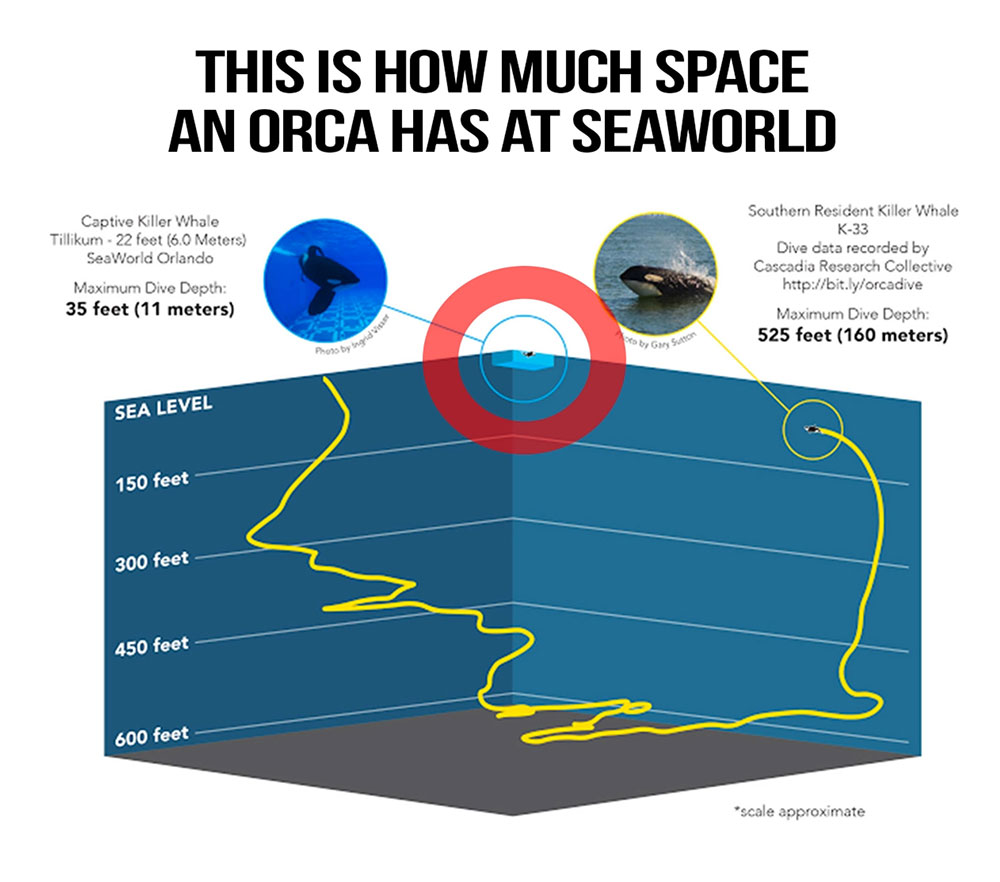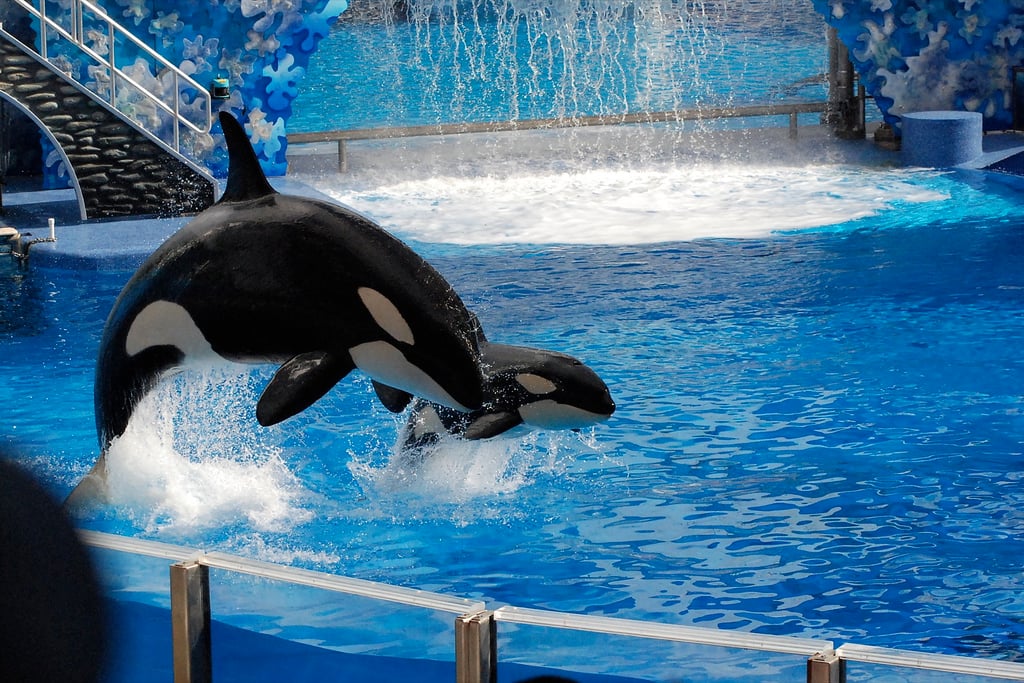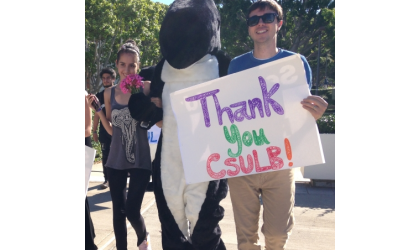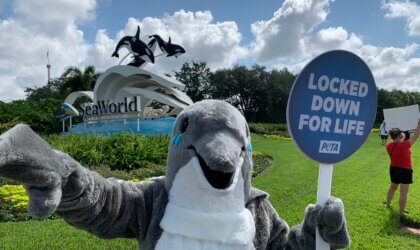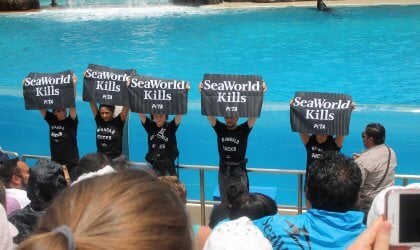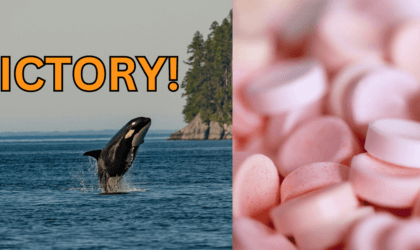The more things change, the more SeaWorld stays the same.
It’s been more than 50 years since the first “Shamu” show debuted at SeaWorld—before the first human landed on the moon. Since then, we’ve seen countless advancements in our increasingly technological society and watched as cell phones and the Internet dramatically altered how we interact with each other around the world. But for orcas at SeaWorld, who still remain in tiny tanks that, to them, are the size of bathtubs, not much has changed at all.
Thanks to the documentary Blackfish and the testimony of both marine experts and former SeaWorld trainers, the public has largely turned against keeping orcas, who are complex and intelligent mammals, in captivity. Orcas in tanks often go mad from their confinement, and many have died prematurely. Tilikum, the orca who was used as SeaWorld’s chief sperm donor, has been driven to kill three humans, yet orca aggression toward humans in the wild is nearly non-existent.
SeaWorld’s profits are dwindling, and its public image is damaged. So the company recently announced that it will end its sordid orca-breeding program, saying that the orcas it currently holds captive will be the last the park imprisons.
What will the world look like for the last orca at SeaWorld?
A 24-year-old orca named Takara at SeaWorld San Antonio is pregnant. Her calf is due next spring, and assuming the baby survives the birth, he or she may end up all alone.
The average age of orcas who have lived at SeaWorld is just 13 years, while orcas in the ocean can live longer than 100 years. Granny, the world’s oldest known living orca, was spotted last year looking healthy and happy at 104 years old.
While the world continues to progress, Takara’s baby will live in a tiny, unnatural tank, just as other captive orcas have before:
Over the next 25 years, many predict that we’ll see a rise in driverless cars on the road, changing transportation as we know it. But Takara’s baby will go no farther than the orcas who are imprisoned at SeaWorld today, diving to a depth of merely 35 feet while their ocean-living counterparts dive to up to 1,000 feet below the surface of the sea.
During the next few decades, Takara’s calf is likely to suffer from sunburns in the park’s shallow tanks, like all the orcas at SeaWorld, who are forced to spend their days swimming in endless circles or even floating listlessly at the surface of the water with little or no shade from the blisteringly hot sun. In the wild, orcas spend up to 95 percent of their time submerged and would find shade in the depths of the ocean, but at SeaWorld, the tanks are far too shallow. Because of this, orcas in marine parks have perpetual sunburns, which are shielded from the public eye with the help of black zinc oxide, which matches their skin.
Effects of Sunscreen Unknown on Orca's Sensitive Skin; May Burn; Eyes are Unprotected #DemandAphisReview #UpdateAWA pic.twitter.com/nhuwtOo5Ky
— VoteWithYourHeart (@HollyO28) March 24, 2015
SeaWorld doesn’t need to wait decades to end orca captivity.
It’s impossible to predict all the ways in which the world may change in the coming years. While our society will continue to progress, Takara’s calf will be imprisoned, watching his or her tankmates die one by one.
Takara’s unborn baby doesn’t need to suffer as the other orcas imprisoned in marine parks have. SeaWorld can act now and craft a transition plan to move the long-suffering animals at its parks into ocean sanctuaries so that they may have some semblance of a natural life, preventing this final orca baby from ever seeing the inside of a concrete tank.
What You Can Do
Join the worldwide chorus of people demanding that SeaWorld free the orcas today.

